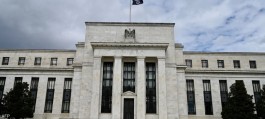The dollar fell broadly on Wednesday after a brief rebound following better-than-expected U.S. retail sales data, as traders focused on the possibility of the Federal Reserve cutting interest rates by September.
The New Zealand dollar rose after data showed domestically driven inflation continued to rise in the second quarter, although the headline figure missed expectations.
The New Zealand dollar gained 0.35% to $0.6071, but futures showed markets were holding onto bets that the Reserve Bank of New Zealand would deliver about three interest rate cuts this year.
In the broader market, the dollar fell, failing to hold onto gains after U.S. retail sales data on Tuesday pointed to robust consumer demand in the world's largest economy and boosted the outlook for economic growth in the second quarter.
Against the US currency, the euro rose 0.06% to $1.0906, while the Australian dollar rose 0.1% to $0.6740.
The dollar index, which measures the performance of the US currency against a basket of six major currencies, fell slightly to 104.19.
According to the CME FedWatch tool, traders expect the US central bank to cut interest rates in September and expect a cut of more than 60 basis points by the end of the year.
Sterling was little changed at $1.2972, ahead of UK inflation data due later on Wednesday.
The yen was last steady at 158.34 per dollar, with traders bracing for any intervention by Japanese authorities to support the currency after a possible move by authorities last week.
Bank of Japan data released Tuesday indicated Tokyo may have spent 2.14 trillion yen ($13.5 billion) on Friday's intervention.
In addition to the estimated amount spent on Thursday, Japan is suspected to have bought nearly six trillion yen last week.



































